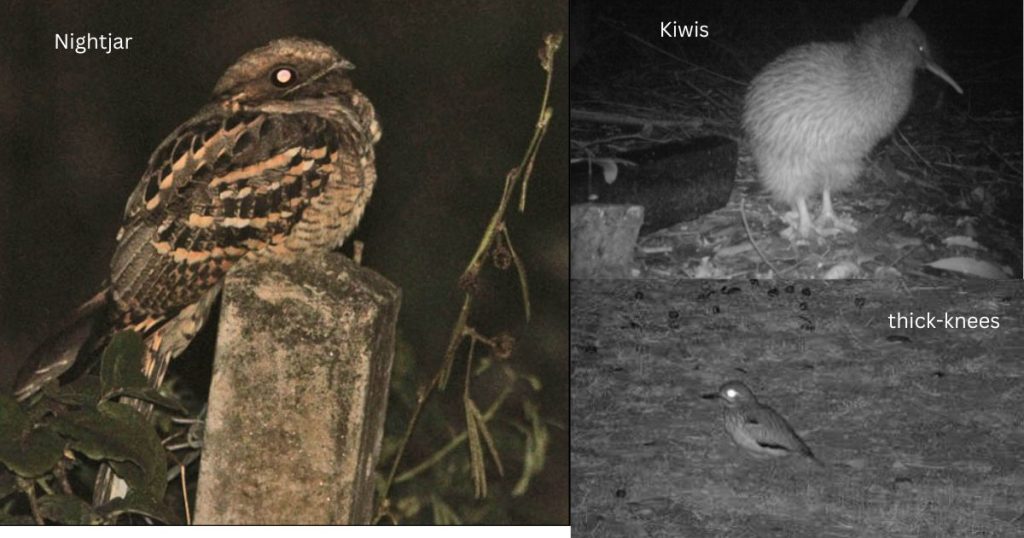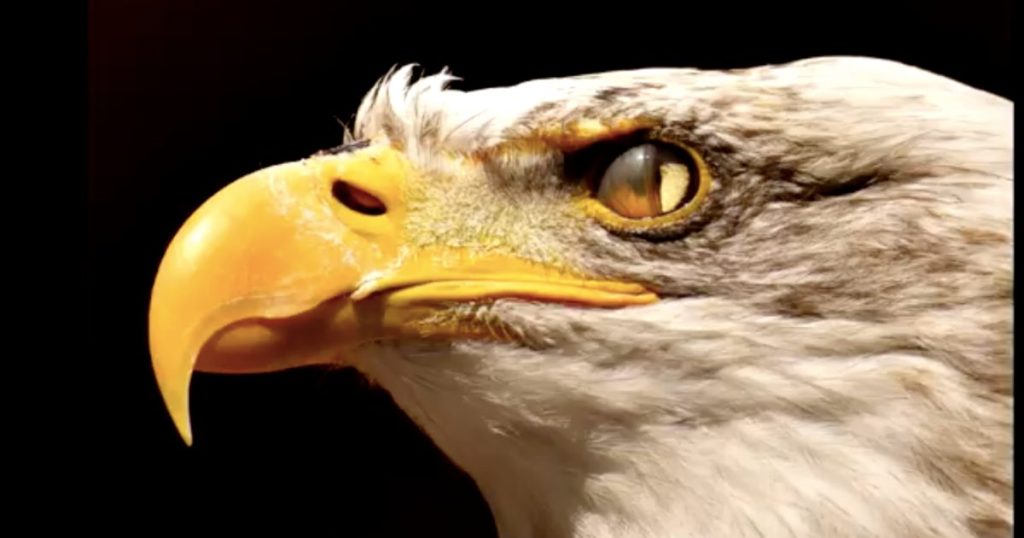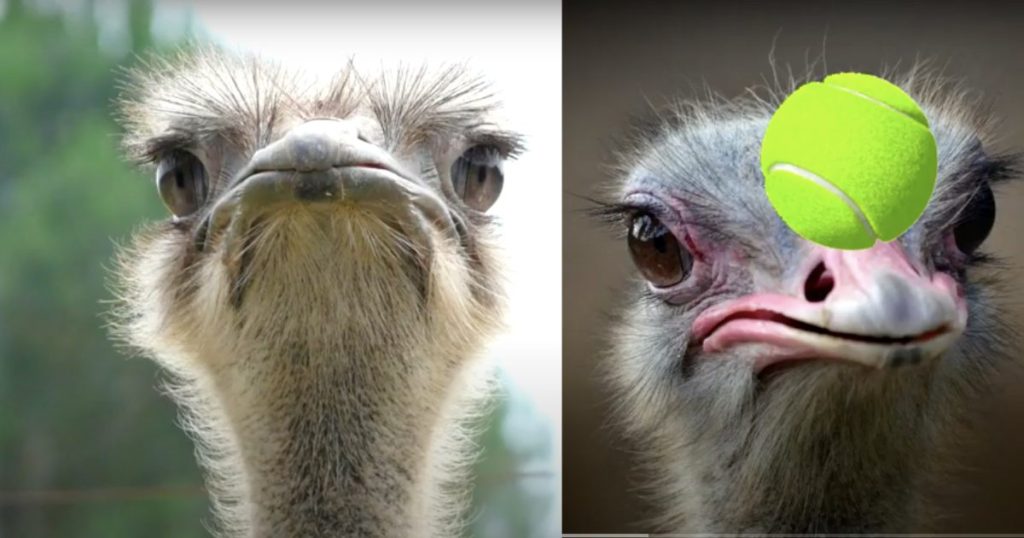Prior to the evolution of eyes, the ways that animals were able to gain information about their worlds were both slow and intimate. It depended primarily upon the transmission of chemicals through air or water. This information either took some time to arrive, or it concerned objects that were very close to or, more likely, in direct contact with an animal’s body. The key advantage that even simple eyes brought was that information about events remote from the animals was received immediately.
How birds evolved eyes
This advantage was so dramatic that the first simple light-sensitive structures, which could detect just the presence and intensity of light, rapidly evolved into something far more sophisticated. This was the birth of ‘spatial vision.’
Spatial vision and its advancement and camera eyes
This is the ability to determine not just that light is present and changing in intensity but also the direction from which light is coming. The refinements of eyes and vision over the past 500 million years have been concerned primarily with elaborating the accuracy of spatial vision. It took probably less than 2 million years for eyes that simply registered the presence of light to evolve into ‘camera eyes.’
These are eyes that show all of the main features of the eyes that we recognize in species of the present day, including ourselves. The evolution of sophisticated eyes, showing all of the key features of modern eyes, could have involved only about 400,000 generations of change.
Spatial vision and birds
Camera eyes had been around for over 350 million years before the first birds appeared on the planet about 150 million years ago. This means that the first birds, and their dinosaur ancestors, were highly likely to have had elaborate visual capacities. Changes in vision have occurred in response to the new environmental challenges that emerged as bird lineages diversified to exploit the wide range of habitats in which birds now exist. Across today’s 11,000 bird species, eyes exhibit both major and subtle differences in design and function.
The importance of vision in birds related to intelligence
The primary reliance of birds on vision is easily asserted. It can be based just upon casual observations of birds completing their everyday behaviors. Relatively large portions of their brains are devoted to the analysis of information from vision. Also, the so-called ‘intelligent’ behaviors of birds seem to be based primarily on visual information. Thus, extracting information from vision and using it to guide sophisticated behaviors is the essential function of the brains of most birds.
The image analysis system
It is the retina that starts the process of image analysis. The retina extracts the essential information that the image contains, encodes it neurologically, and sends it via the optic nerve for further analysis by the brain.
When looking into any eye, we see the pupil as a black void. We are looking through the optical system and through the thin transparent neurological layers of the retina to the uniformly black surface, the pigmented epithelium, that lies behind it. As outlined above, each retina contains many millions of individual neural cells arranged in distinct layers. The most prominent of these layers contains the photoreceptor cells, the well-known rods, and cones, and these are discussed in detail below.
When light photons reach a photoreceptor, a neural signal is generated and relayed to a ganglion cell which in turn relays that information through the optic nerve to the brain. Of crucial importance at this first level of image analysis are the number, density, and distribution of photoreceptor and ganglion cells across a retina. The actual numbers of photoreceptors are very high. For example, in the eyes of eagles (and humans), the total number of cells in the whole retina probably exceeds 100 million. In all retinas, however, the number and density of photoreceptor cells are far from uniform. In some locations, photoreceptor cells are packed close together. In others, they are more sparse, and large differences in density can occur between locations less than 1 mm apart.
Photoreceptors: rods and cones
Photoreceptors are of two basic types, rods, and cones. The rods have higher absolute sensitivity and function principally at low light levels (between dusk and dawn in natural environments), while the cones underpin vision during higher daytime light levels. Cones are the photoreceptors that provide color vision.
Sensitivity in the spectrum
It is clear that many birds detect light over a wider range of wavelengths than humans are able to; in other words, they have a broader visible spectrum. Also, it seems that birds may be able to discern more colors within their spectrum; that is, they can probably make finer color discriminations, at least in some parts of the spectrum. Some birds can detect light in the ultraviolet (UV) part of the spectrum, light to which human vision is insensitive. However, vision in the UV part of the spectrum is not unique to birds, for some terrestrial mammals and many invertebrates are also able to detect information using UV light.
It is as important to note that not all birds see in the UV part of the spectrum. In fact, those bird species which have true UV vision are found only in the gulls (Laridae, Charadriiformes), ostriches (Struthioniformes), parrots (Psittaciformes), and the oscine passerines (Passeriformes), but excluding the crows (Corvidae). Other bird species may have visual sensitivity that extends into the violet spectrum, but they cannot be considered truly UV-sensitive, while others, notably some birds of prey, have optical systems that filter out UV light from the image so that it never reaches the retina.
color vision
It seems unlikely that color vision evolved specifically for enhancing information about the presence and properties of certain types of objects that are key in the life of an animal. It is more likely that it first evolved to meet a broad range of spatial tasks.
Examples of situations where detection is enhanced by the color vision in birds include the use of objects in display behaviors (as seen, for example, among bowerbirds (Ptilonorhynchidae, order Passeriformes)), and the detection of plumage patterns and particular flowers or fruits against foliage backgrounds. This does not mean, however, that these specific tasks were the prime drivers for the evolution of color vision. Indeed, it seems more likely that the color of plumages, flowers, or fruits evolved to become more conspicuous in response to the vision of the observing birds rather than that the vision of the birds evolved to detect these particular objects.
Do fruits change color for birds to be eaten?
Fruits that are eaten regularly by birds have probably evolved to encourage their detectability. This is because the consumption of the fruit will result in a wider dispersal of seeds. Thus, many fruits have evolved to be detected by birds and this is achieved in two ways.
First, the ripe fruits (ready for seed dispersal) reflect light that contrasts with the surrounding foliage, both in brightness and color.
Second, smaller fruits often occur in conspicuous concentrations so that they present a larger target that can be detected with relatively low-resolution vision at a distance.
Figure 3.6 shows some examples of fruits whose seed dispersal is aided by birds. It is clear that they reflect light from different parts of the spectrum, from the red and orange wavelengths to the blues and ultraviolets. Interestingly, the same bird species may consume fruits with all of these different colors, suggesting that there are no specializations of vision associated with detecting fruits of particular colors.
All of these fruits occur in large concentrations, creating a large target for the bird to detect. This suggests that their detection does not require a vision of high spatial resolution.
Although the individual fruits tend to be relatively small, they usually occur in large clusters. Therefore, the initial task for a bird is to detect these clusters at a long distance. Individual fruits can be detected when the birds work over the tree or shrub, but they can find this food source at a distance because of the large aggregations of individual fruits.
Birds without color vision:
This is based on knowledge of the visual sensitivity of individual cone receptors, and it seems safe to assume that practically all birds have color vision. Furthermore, the ability to differentiate colors in much of the spectrum differs little between species. Even the nocturnally active owls are thought to have some color vision, although it is not as sophisticated or as subtle as that of other bird species. However, genome analysis, although not the determination of visual pigments directly, suggests that color vision may be absent from the kiwi species, and these may be the only group of birds that are not capable of making color discriminations.
Color through birds’ eyes
Just how the world might look when viewed through the birds’ tetrachromatic color vision system is of considerable interest. For example, does tetrachromatic vision mean that particular parts of the spectrum have different salience to birds compared with our own view of the world? Certainly, knowledge of the tetrachromatic system suggests that bird’s eye views are likely to be different from how humans detect color information in the world. Of course, it is not possible to see these colors through birds’ eyes, but computational methods have sought to compare color patterns viewed through trichromatic and tetrachromatic vision systems and have given some clues as to which kinds of differences between natural color patterns are changed by a tetrachromatic system.
All of these differences in spectral sensitivity and color vision, however, apply only at high (daytime) light levels when the cones are active. At lower (twilight and night-time) light levels, only the rods function, and they have very similar characteristics across all birds and across mammals. Thus, at low light levels, a similar sensitivity across the spectrum, and an absence of color vision, is found in all bird species and, indeed, in humans and other mammals.
Bird eye acuity:
With possible sources of variation in eyes, it is not surprising to find that acuity does show marked differences across species, acuity in birds ranges at least 30-fold. The highest acuity is found in diurnally active raptors (Wedge-tailed Eagle and Indian Vulture) and the lowest in small passerines (House Sparrow and House Finch). It should be noted that the highest acuity so far recorded in any animal is that of Wedge-tailed Eagles and Indian Vultures. It is twice the highest acuity recorded in young humans and about five times that of the standard to which human vision is usually corrected by spectacle lenses, which represents average acuity among older humans. It is also worth noting that falcons (Brown Falcon) have acuity about half that of an eagle, the same as the best young humans.
This wide range in acuity across bird species is remarkable, and it reinforces the point that when viewing the same scene, different species will have different information available to them. It may also be surprising to some readers that the acuity of eagles and falcons is not higher, at least compared with humans.
Why do eagles have such high-power eyes?
The acuity of a Wedge-tailed Eagle crucially means that these eagles can detect a given object at five times the distance of an average human observer and twice that of a young person with the keenest vision. Thus, an eagle is certainly able to see an object of interest long before a human.
The eagle’s acuity is at least eight times better than a dove’s. Therefore, a dove would have to be at least eight times closer to the same object for it to be detectable, but it would not in any case be interested in the same targets as the eagle. Clearly, doves would gain no advantage in being able to match the performance of an eagle or even of ourselves since their ecology does not require the detection of objects at large distances. Thus, it would seem that doves or sparrows, which feed on small items detected on the ground at close range, have evolved much lower spatial resolution. Eagle-eyed acuity would have no selective advantage for doves or sparrows. However, the higher resolution of a falcon would mean that the bird could have detected its prey and be well on the way towards it at high speed, long before the prey has detected that the predator is coming.
Shades of grey and color
The common finding across all of these species, including the birds, is that spatial resolution for colored patterns is considerably lower than for black and white patterns. This means that, for example, a pattern of green and red stripes would only be detected at higher stripe widths than could be detected if the pattern was black and white. In other words, fine color patterns cannot be so easily detected as black and white patterns.
Why do some bird’s eyes glitter in the light?
At night, some birds’ eyes shine bright red, yellow, or white in the beam of a flashlight or automobile headlights. The “eyeshine” of nightjars is a structural color produced by light scattering from an array of lipid spheres in the last layer of the retina, the retinal pigmented epithelium, called a tapetum lucidum. Unlike in mammals, the tapetum lucidum of nightjars is not a permanent tissue, but a physiological state of the dark-adapted retinal pigmented epithelium in which the melanosomes are pulled back, and the lipid spheres move forward.
The function of the tapetum lucidum is to reflect light that has been transmitted through the retina back into the retina, where it may be sensed, thus helping birds to see better at night. Kiwis, thick-knees, the Boat-billed Heron, the flightless Kakapo, many nightjars, owls, oilbirds, and other night birds all produce nocturnal eyeshine indicative of a tapeta lucidum.

Bird Facts:
Gannets, booby, and other diving birds have forward-facing eyes. They can spot fish from high above the sea and calculate how far a fish will move as they plunge into the water after it.

Birds have a transparent third eyelid that slides horizontally across the eyeball to clean it. It also acts like a windshield to protect the eye when the bird is flying or diving underwater.

Penguins and passerines, for example, examine nearby objects with one eye at a time. The resulting image is relatively flat because monocular vision does not achieve depth perception with the same accuracy as binocular vision does. Thus, most birds need to use information from within the visual field to estimate the size of objects and their distance from the observer. To compensate, some view an object with one eye from two different angles in rapid succession. Pigeons often bob their heads as they walk to maintain a constant fixed visual perspective between bobs. Pigeons walking on a treadmill at a constant speed do not bob their heads because the visual scene is stationary.
Birds with Gaint eyes:
European Starlings have giant eyes that occupy 15% of their head!

And speaking of giant eyes, the largest eye of any land animal belongs to the ostrich. Each of its eyes is almost the size of a tennis ball.

So next time you look at a bird with all its brilliant colors, take some time to enjoy what you can see but also try to imagine all that you can’t see.